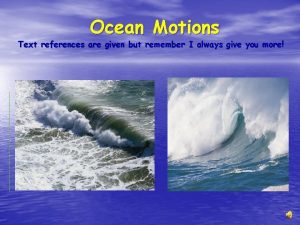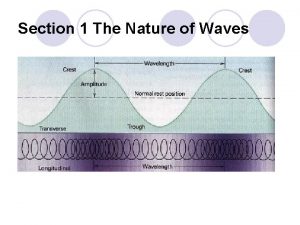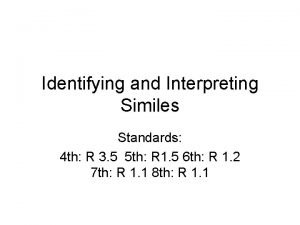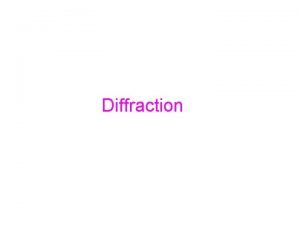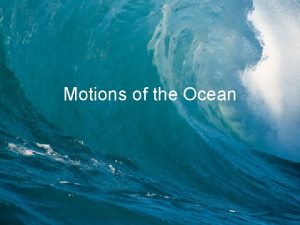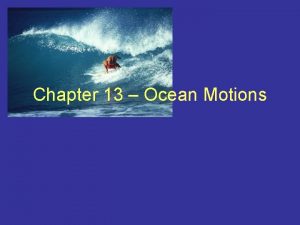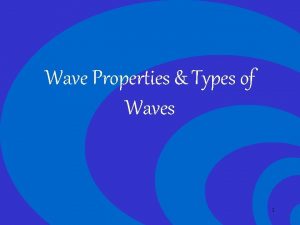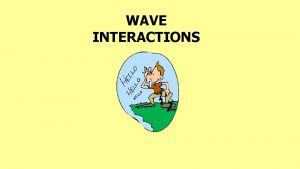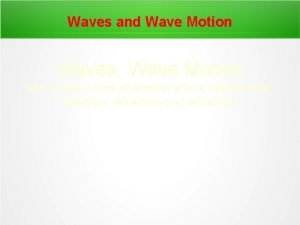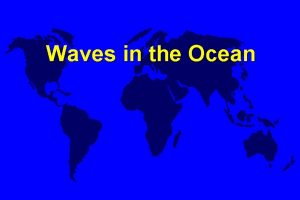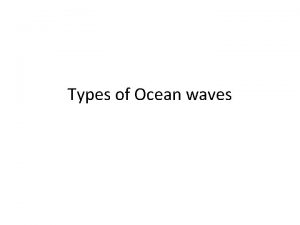Ocean Motions Chapter 13 How Waves Form wave












- Slides: 12

Ocean Motions Chapter 13

How Waves Form • wave is the movement of energy through a body of water. • process begins with wind • winds blowing across the water's surface transmit their energy to the water. • Stronger winds create larger waves. • Winds blowing across longer distances build up bigger waves.

• Although waves may appear to carry water toward shore, the water does not actually move forward in deep water. • As the wave passes, the object lurches forward a little, then bobs backward. • The wind affects the water at the surface more than the deep water.


Describing Waves • the highest part of a wave is the crest. • horizontal distance between crests is the • • wavelength. Long, rolling waves with lots of space between crests have long wavelengths. Short, choppy waves have shorter wavelengths. frequency, the number of waves that pass a point in a certain amount of time.

• the lowest part of a wave is the trough • vertical distance from the crest to the trough is the wave height • The energy and strength of a wave depend mainly on its wave height

How Waves Change Near Shore • In deep water, waves • • usually travel as long, low waves called swells. The wave breaks onto the shore, forming surf. Near shore, the wave height increases and the wavelength decreases.

• The water that moves up the beach flows back into the sea. • This pull, often called an undertow, carries shells, seaweed, and sand away from the beach.

How Waves Affect the Shore • Since wave direction at sea is determined by the wind, waves usually roll toward shore at an angle.

• longshore drift, The movement of water and sediment along a beach caused by waves coming into shore at an angle. • Sandbar, A ridge of sand deposited by waves as they slow down near shore. • rip current, a rush of water that flows rapidly back to sea through a narrow opening

Reducing Beach Erosion • erosion can wear away the beach • One method of reducing erosion along a stretch of beach is to build a wall of rocks or concrete, called a groin, outward from the beach.

 Ocean motions
Ocean motions Ability of two or more waves to combine and form a new wave
Ability of two or more waves to combine and form a new wave Nekton include all animals that
Nekton include all animals that Convergent boundary with subduction
Convergent boundary with subduction Ocean ocean convergent boundary
Ocean ocean convergent boundary Convergent plate boundaries
Convergent plate boundaries Ocean ocean convergent boundary
Ocean ocean convergent boundary Scrat's continental crack-up
Scrat's continental crack-up Ocean to ocean convergent boundary
Ocean to ocean convergent boundary Red ocean blue ocean strategi
Red ocean blue ocean strategi Ocean currents waves and tides
Ocean currents waves and tides Beach simile
Beach simile Diffraction ocean waves
Diffraction ocean waves
